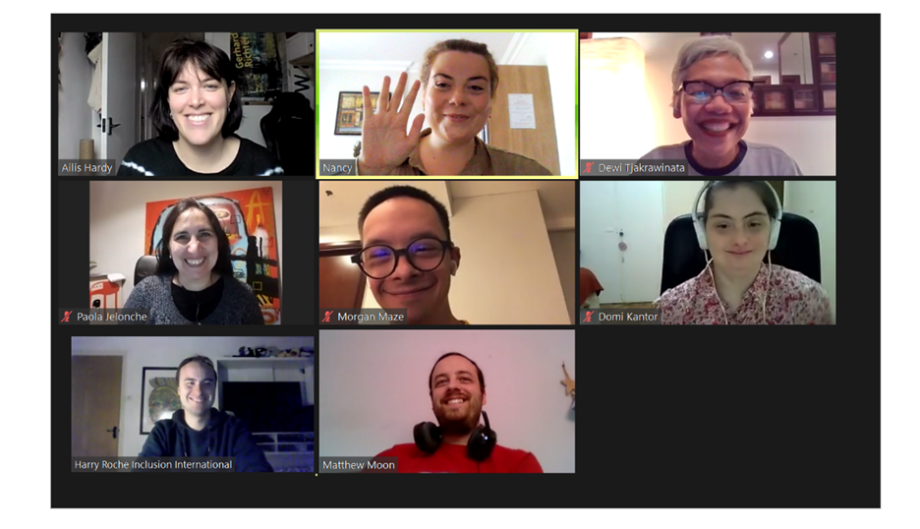Participation of people with intellectual disabilities in creating an accessible website
- Location
- Worldwide
- Project type
- Accessible technology
Background
In 2021 a first draft of the 'Listen Include Respect'-guidelines was shared with our reference group, ten international self-advocacy organisations and ten other experts through an inclusive consultation process. We heard that the guidelines were too long, not accessible and hard to use. We heard that a website would be the most useful way of sharing the guidelines information.
Our international reference group of people with intellectual disabilities gave us lots of feedback on what an inclusive website would look like.
This gave us a good idea of where to start, but we knew that to be really inclusive the detailed work on the website should be led by a group of people with intellectual disabilities.
Recruitment of website design group
In 2022 we brought together a group of self-advocate consultants with intellectual disabilities into a working group to lead the work and make decisions on designing the website.
To recruit the group of people with intellectual disabilities we wrote and shared a plain language description of the work that we shared with our Inclusion international and Down Syndrome International networks.
The description included a schedule of meetings with dates, the payment offered to self-advocates and support people, and the expectations for self-advocates and supporters.
We offered to meet with anyone who was interested so that they could find out more about the work.
We invited self-advocates to send in a short video explaining why they were suitable for the group.
The project team, which included a staff person with an intellectual disability, reviewed the videos and selected a small group.
- Domi and Paola from Fundacion Visibilia, Argentina
- Morgan and Dewi from YAPESDI, Indonesia
- Matthew from Sunderland People First, UK
We shared a short plain language consultancy contract which had information about responsibilities and how people would be paid.

Planning the website design meetings
Harry, Inclusion International’s staff person with an intellectual disability, coordinated the group and their work.
To start the work we planned a schedule of online meetings
- Meeting 1 – Background information and discussion on accessibility
- Meeting 2 – Structure and menus
- Meeting 3 – Content and using the website
- Meeting 4 – Design of the website including images
- Meeting 5 – Final check
At least one extra meeting was allowed and budgeted for in case there was a need for more discussion or an extra review session.
Running inclusive meetings
We followed the Listen Include Respect guidance on running online meetings.
In the first meeting we decided on consistent times and days that worked for everyone. We talked about a regular structure for the meetings that everyone agreed with.
We shared the agenda and meeting information at least 1 week in advance to give people time to prepare.
We shared clear activities to do in advance, for example menu sorting. We shared feedback questions with the agenda which helped people write their feedback.
We sent reminder emails with meeting links and all information the day before.
Each meeting was chaired by a staff member with an intellectual disability with support from other team members.
We remembered to speak in easy, clear language and not use any difficult jargon. We allowed time for translation as we had a Spanish speaker in the group.
Each meeting started with an informal, fun icebreaker so people felt relaxed and comfortable.
We kept agendas short and allowed enough time for discussion (1hr -2hrs) but we made sure to respect timings and meetings did not run over.
The chairperson made sure everyone had a chance to share their ideas and give their feedback. We offered follow up or separate meetings in case people needed extra time to reflect or wanted to speak in a smaller group. (...)
Download the case study to read the whole story.